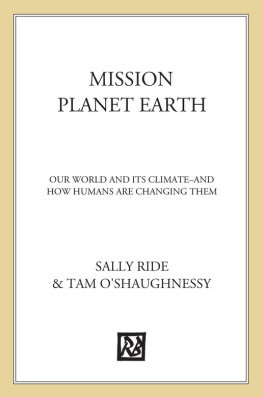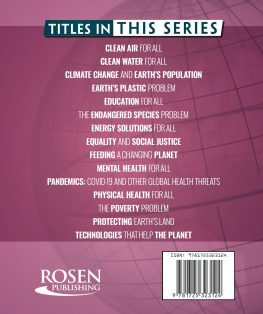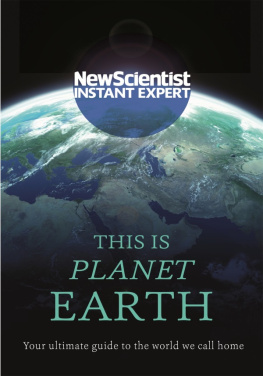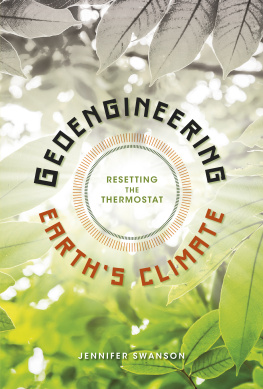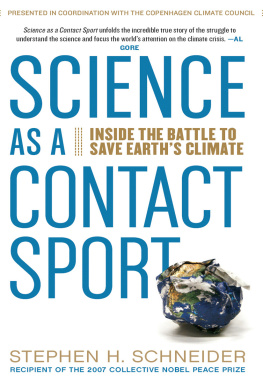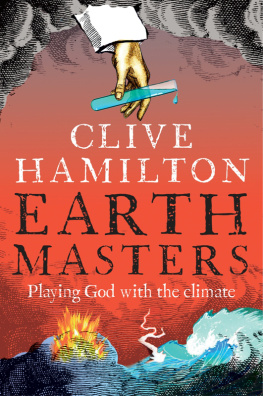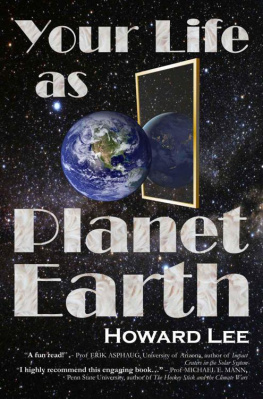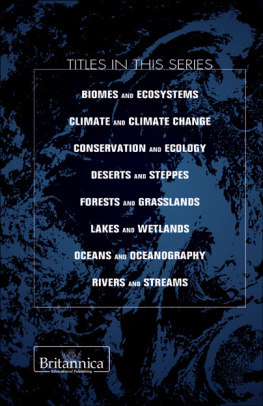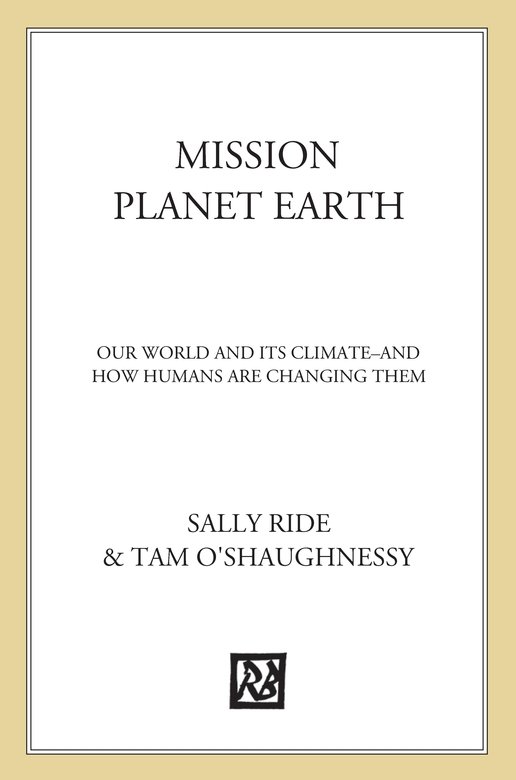The study of Earths climate is complex, dynamic, and rapidly evolvingnew findings are released almost every day. It involves thousands and thousands of scientists around the globe from every walk of sciencebiology, chemistry, physics, mathematics, and engineering as well as cross-disciplinary fields like oceanography, ecology, geophysics, and meteorology. It involves teams of scientists, with different science backgrounds, working together to unravel the details of how people are reshaping the climate and how this is impacting everything from the weather to the web of life.
We used a wide variety of resources in writing this book. A few, however, proved especially helpfulinformative, insightful, and clearly written. We recommend these resources for students, educators, librarians, and parents seeking to learn more about this important topic.
Climate Change 2007 , the most recent United Nations Report of the Intergovernmental Panel on Climate Change (IPCC). This Synthesis Report summarizes three separate reports that provide the current state of knowledge: The Physical Science Basis, Impacts, Adaptation, and Vulnerability, and Mitigation of Climate Change. It clearly summarizes the causes and consequences of climate change. In addition, the Frequently Asked Questions (FAQs) for The Physical Science Basis provides clear explanations, with illustrations, of many topics (for example, What is the Relationship between Climate Change and Weather? and How are Temperatures on Earth Changing?) http://www.ipcc.ch .
Dire Predictions: Understanding Global Warming by leading climate scientists Michael E. Mann and Lee R. Kump (New York: Dorling Kindersley, 2008). This book is an illustrated guide to the findings of the Intergovernmental Panel on Climate Change (IPCC). Its a wonderful book with many helpful illustrations that explain the science behind climate change.
The Forgiving Air: Understanding Environmental Change by Richard C. Somerville (Second Edition: American Meteorological Society, 2008). This is a fascinating and understandable book about climate science based on a series of lectures to K12 teachers, by one of the worlds top climate scientists.
SALLY RIDE , best known for being the first American woman in space, is Emerita Professor of Physics at the University of California, San Diego. Dr. Ride has B.S, M.S, and Ph.D. degrees in Physics, all from Stanford University. During eight years as a NASA astronaut she flew on two space shuttle missions, served on the Presidents Commission investigating the space shuttle Challenger accident, and headed NASAs long-range planning after the accident. Her flights into space gave her a special perspective on our planet, and while at NASA she championed NASAs Mission to Planet Earth. Since leaving NASA, Dr. Ride has committed herself to improving science education. She is currently President and CEO of Sally Ride Science, a K12 science education company that creates programs and publications to support students natural interest in science, and places a special emphasis on encouraging girls. At Sally Ride Science, Dr. Ride initiated the development of a series of science books for the classroom (including a set on Our Changing Climate) and professional development for educators to help them bring the science behind climate change to the classroom. Dr. Ride has received numerous honors and awards, and has co-authored seven childrens science books, including The Third Planet (co-authored with Tam OShaughnessy), which won the American Institute of Physics Childrens Science Writing Award.
TAM OSHAUGHNESSY is Professor Emerita of Education at San Diego State University. Dr. OShaughnessy studied biology in college, earning B.S. and M.S. degrees from Georgia State University. While teaching college biology, she became interested in how kids learn and went on to earn a Ph.D. in school psychology from the University of California, Riverside. A former science teacher and award-winning childrens science writer, Dr. OShaughnessy is currently the COO and Executive Vice President of Sally Ride Science, responsible for all publications and professional development. She oversees the development of Sally Ride Sciences classroom books, teacher guides, and educator institutes. In addition, Dr. OShaughnessy is the author of ten science books for children, including Our Changing Climate: Ecosystems and The Third Planet (co-authored with Sally Ride), which won the American Institute of Physics Childrens Science Writing Award.
PHOTO CREDITS
Pages 4-5, National Aeronautics and Space Administration (NASA); 7, John Eastcott & Yva Momatiuk/Getty Images; 8-9, Tim Fitzharris/Getty Images; 10, Panoramic Stock Images/National Geographic Stock; 11, Randy Olson/Getty Images; 16 (top), Stuart McCall/Getty Images; 16 (center), James Martin/Getty Images; 16 (bottom). Panoramic Images/Getty Images; 27, Rich Reid/Getty Images; 28-29, Ronaldo Schemidt/Getty Images; 32 (top left), AFP/Getty Images; 32 (top right), Jonathan Kim/Getty Images; 32 (center left), Joseph Baylor Roberts/Getty Images; 32 (center right), Bill Curtsinger/Getty Images; 32 (bottom left), James P. Blair/Getty Images; 32 (bottom right), Imagemore Co., Ltd./Getty Images; 34 (top), Stockbyte/Getty Images; 34 (bottom), Chris Cheadle/Getty Images; 36, Forrest M. Mims III; 39 (left), Reto Stckli; 39 (right), Karen Kasmauski/Getty Images; 40 (left and right), National Ice Core Laboratory (NSF, USGS); 42-43, Flip Nicklin/Getty Images; 44, Matthias Breiter/Getty Images; 46, Tim Fitzharris/Getty Images; 49, Richard Perry, The New York Times/Redux Pictures; 51, Tom Mareschal/Getty Images; 53 (top), Paul Bronstein/Getty Images; 53 (bottom), NASA; 54, Roger Braithwaite/Peter Arnold, Inc.; 56 (left), Maria Stenzel/National Geographic Stock; 56 (right). Flip Nicklin/Getty Images; 57, Gabriel Bouys/Getty Images; 59 (top), NASA; 59 (bottom), British Antarctic Survey; 60, NASA; 61, Paul Nicklen/Getty Images; 64, Peter Essick/Getty Images; 67, National Oceanographic and Atmospheric Administration (NOAA): 68 (top), Torsten Blackwood/Getty Images; 68 (bottom), L. L. Langstroth/CaIPhotos; 71, Fred Bavendam/Getty Images; 72 (left), Darryl Leniuk/Getty Images; 72 (right), Kevin Raskoff, Ph.D.; 75, NASA; 77, Alan Bailey/Getty Images.

